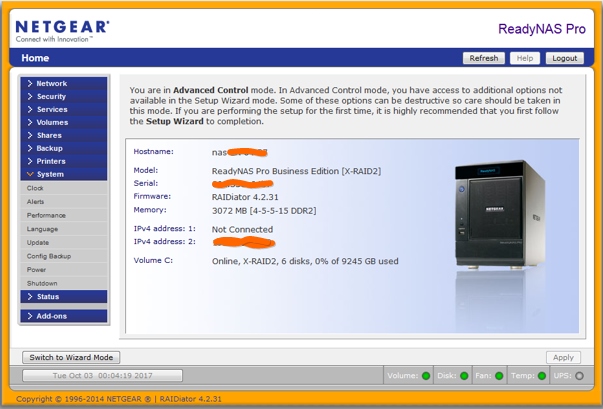Php 5 3 8 For Readynas X86 Means
I'm running IIS7 on Windows Server 2008 with Plesk 10. I have website under plesk and a site not under plesk and only on IIS.
The website under plesk successfully runs php files but the other website gives error:HTTP Error 500.0 - Internal ServerError An unknown FastCGI error occuredModule FastCgiModuleNotification ExecuteRequestHandlerHandler PHP5-FastCGI-phpError Code 0x8007010bRequested URL PhysicalPath C:IIS.comtest.phpLogon Method AnonymousLogon User AnonymousPHP5-FastCGI-php is configured exactly like the site under plesk. Php-cgi.exe is located at C:Program Files (x86)ParallelsPleskAdditionalPleskPHP5EDIT:Here is my php.ini but I don't get any errors. Errorreporting = EALL & ENOTICEdisplayerrors = Ondisplaystartuperrors = Offlogerrors = Onerrorlog = 'C:Program Files (x86).logtest.log'errorlog = syslog. I had the same issue and look for a solution for 2 days. It was trial and error.The error code was 0x8007010b.In IIS logs #Fields. Sc-status sc-substatus sc-win32-status time-taken.
500 0 267 4Both error 0x8007010b and 267 (use command NET HELPMSG 267) say that The directory name is invalid.Solution:. Grant full-access to IUSR to:. my webapp folder. folder containing the executable to be run (in my case python.exe). In IIS go to - Authentication (double-click it) - Select Anonymous Authentication (should be Enabled) - Edit. Choose 'Specific User' set IUSR.


Netgear Nas Backup
Select root IIS (click) - Authentication (double-click it) - Select Anonymous Authentication (should be Enabled) - Edit. Choose 'Specific User' set IUSRAfter doing steps 1-3, Error 500.0 was gone.
In my case step 3 was missing. I think it is an important detail to know.Hope it help! I had the same problem. Once i try to get on the phpmyadmin page it gives me the 500 error response. To fix this:Step 1) you've to enable the extensions ' extension=phpgd2.dll ', ' extension=phpmbstring.dll ', and ' extension=phpmysql.dll ' in php.ini (in php folder) ( if you did that already then go to step two).Step 2) create a folder in c: named 'temp' and inside that folder create another folder named 'phpsessions', after doing so go to php.ini (in php folder) and look for 'session.savepath'and replace whatever between the quotation mark with the location of the php session you created i.e.

'C:tempphpsessions' and don't forget to uncomment it;Good luck to my fellow geeks:P.